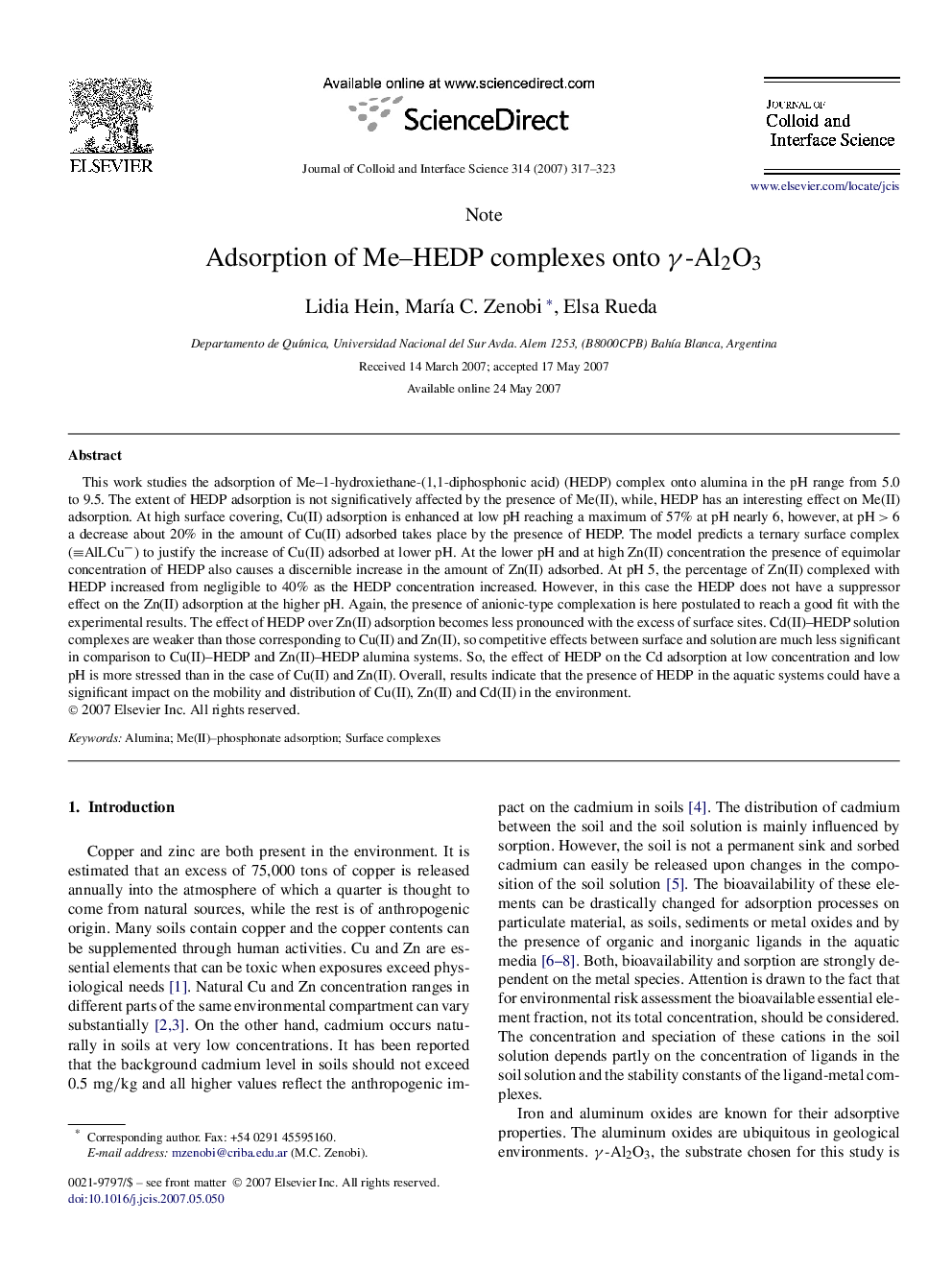| Article ID | Journal | Published Year | Pages | File Type |
|---|---|---|---|---|
| 612243 | Journal of Colloid and Interface Science | 2007 | 7 Pages |
This work studies the adsorption of Me–1-hydroxiethane-(1,1-diphosphonic acid) (HEDP) complex onto alumina in the pH range from 5.0 to 9.5. The extent of HEDP adsorption is not significatively affected by the presence of Me(II), while, HEDP has an interesting effect on Me(II) adsorption. At high surface covering, Cu(II) adsorption is enhanced at low pH reaching a maximum of 57% at pH nearly 6, however, at pH>6pH>6 a decrease about 20% in the amount of Cu(II) adsorbed takes place by the presence of HEDP. The model predicts a ternary surface complex (AlLCu−) to justify the increase of Cu(II) adsorbed at lower pH. At the lower pH and at high Zn(II) concentration the presence of equimolar concentration of HEDP also causes a discernible increase in the amount of Zn(II) adsorbed. At pH 5, the percentage of Zn(II) complexed with HEDP increased from negligible to 40% as the HEDP concentration increased. However, in this case the HEDP does not have a suppressor effect on the Zn(II) adsorption at the higher pH. Again, the presence of anionic-type complexation is here postulated to reach a good fit with the experimental results. The effect of HEDP over Zn(II) adsorption becomes less pronounced with the excess of surface sites. Cd(II)–HEDP solution complexes are weaker than those corresponding to Cu(II) and Zn(II), so competitive effects between surface and solution are much less significant in comparison to Cu(II)–HEDP and Zn(II)–HEDP alumina systems. So, the effect of HEDP on the Cd adsorption at low concentration and low pH is more stressed than in the case of Cu(II) and Zn(II). Overall, results indicate that the presence of HEDP in the aquatic systems could have a significant impact on the mobility and distribution of Cu(II), Zn(II) and Cd(II) in the environment.
Graphical abstractAdsorption of Cu(II) and Zn(II) onto alumina as a function of pH in the presence of HEDP. Aged alumina 1 g/L, I=0.1 MI=0.1 M NaNO3. Total concentration Cu(II)–HEDP 5×10−4 M5×10−4 M (a) and Zn(II)–HEDP 5×10−4 M5×10−4 M (b).Figure optionsDownload full-size imageDownload as PowerPoint slide
